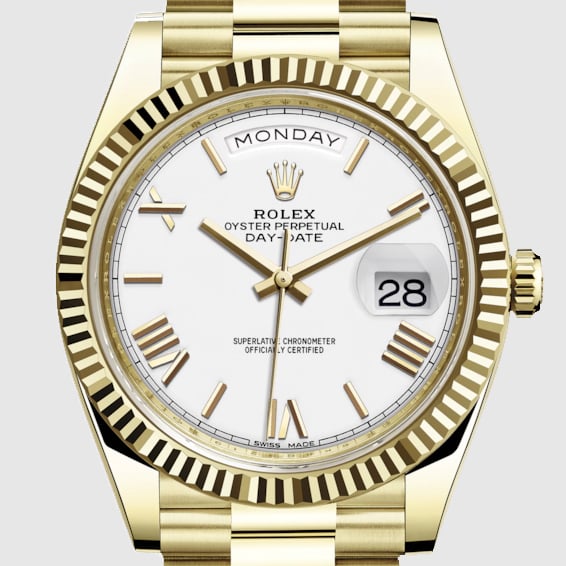There is a lot of confusion around the different types of watch glass and what they all mean for the average watch enthusiast, we wanted to take a look at the different types of glass in the watchmaking industry discuss if they make a difference or not.
If you’re looking at watches online and want to know exactly what Sapphire Crystal glass or Hardlex crystal glass is then you’ve come to the right place!
So a watches glass is the circular piece of glass or plastic that covers the face of your watch, it’s main purpose is to protect the watches dial from knocks and bumps however it can also be used to magnify the dial or a specific part of the dial for example the date display, this is often referred to as a Cyclops lens.

Now that we have explained what the watch glass is and what purpose it serves lets take a look at what types of watch glass there are and guide you through them one by one. We will start at the weakest and build our way up to the strongest.
Acrylic Watch Glass
Acrylic watch glass is probably the weakest of all types of watch glass, this is mostly down to the fact that it is made from plastic and not from actual glass. Acrylic is a cheap to manufacture plastic that is rather weak. Acrylic glass is often found on the lower price point watch brands such as Timex and Lorus however it is sometimes found on Luxury brand watches such as Junghans who use this on some of their models however they tend to use” Plexiglass” instead so that you don’t associate it with Acrylic, but in all honesty Plexiglass is a type of Acrylic as well as these terms “Acrylite, Lucite and Perspex”. Acrylic glass is very light weight so if you are looking for a very light or weightless timepiece its definitely one to consider and not rule out all together. Acrylic glass is also repairable if scratched unlike some other types of glass, its often a glass that you find on kids watches not because it is especially durable but because if they break it obtaining a replacement wont cost you a lot especially as it will probably happen again.
Pros – Cheap, easy to replace, lightweight, easy to rub out scratches
Cons – Looks cheap, fairly weak
Mineral Crystal Glass
Mineral crystal glass is probably the most common glass you will find on a watch, if you own a standard medium price point watch it more than likely has mineral crystal glass. Mineral crystal glass is manufactured by using standard tempered glass that is made from silica. This makes it more scratch resistant and is still fairly low cost to produce which is why it is the most commonly found watch glass. It is not completely scratch resistant however and it will probably get one or two scratches in its lifetime, if this happens you would need to send it in to the watch manufacturer for them to inspect. The manufacturer would be able to tell you if if could be buffed out or if you would need a glass replacement.
It is also important to note that Mineral Crystal glass can be coated in an Anti-Reflective coating, this is sometimes referred to as AR coating or anti-glare coating. This coating is included by some brands as standard to help increase readability in harsh lighting conditions. It can improve the vision of the watch face, reduce the strain on your eyes trying to tell the time and it can also make your watch look more aesthetically pleasing. This is made possible by the AR coating all but eliminating any reflections from the front of the watch glass.
Pros – harder resistance to scratches than acrylic, can be coated in AR, looks better than acrylic
Cons – can still be scratched, harder to buff out, costs more
Sapphire Crystal Glass
This is the top of the scale when it comes to watch glass, if you are looking at a watch and it has sapphire crystal glass then you have the highest quality glass that you can get right now. Just like the name suggests it is made from sapphire however it is more commonly made from synthetic sapphire not genuine sapphire. Sapphires are used due to their high scratch resistance as well as their general toughness. Sapphires also have a good appearance, they look nice and are basically impossible to scratch unless you have a diamond to hand.
But aren’t sapphires blue? The answer is yes they are blue. They can also be red, yellow, green or even purple. This is due to impurities within the crystal such as chromium, copper, iron or titanium to just name a few and these are what gives it the coloured hue. If you manage to find pure sapphire it is in fact clear, this can however be hard to find which is why synthetic sapphires are more commonly used.
So how is Sapphire crystal made? It was originally made by a French Chemist who went by the name of Auguste Verneuil who made glass sheets of it by obtaining aluminium oxide powder and super heating it whilst also putting it under extreme pressure. He then heat treated the crystal to remove its internal stresses as these can cause weakness, its then enters the final stage of production where it is processed into sheets, and voila, synthetic sapphire glass.
It is important to note that whilst this is the highest level of scratch resistance Sapphire crystal is still subject to shattering or cracking.
pros – highest level of scratch resistance, aesthetically pleasing
cons – expensive, can shatter or crack





